CHIOS
Vacations and Sightseeing

Vacations and Sightseeing
| Basic information | |
| Official language | Greek |
| Capital | Chios Town |
| Area | 843 km² |
| Population | 54,930 (2019) |
| Currency | euro (EUR) |
| Web | .gr |
| Code. | GRC |
| Tel. | +30 |
Popular destinations GREECE
| Aegina | Alonissos | Andros |
| Chios | Corfu | Crete |
| Hydra | Kalymnos | Karpathos |
| Kefalonia | Kos | Lefkas |
| Lesbos | Mykonos | Naxos |
| Paros | Patmos | Peloponnese |
| Poros | Rhodes | Samos |
| Santorini | Skiathos | Skopelos |
| Spetses | Thasos | Zakynthos |
Vacations and Sightseeing
Chios can be divided into three distinct areas:
Mastichochoria, in the south of Chios, is characterized by the medieval mastic villages and the mastic and olive trees. Famous mastic villages are Vavyli, the best preserved mastic village Mesta and the biggest and most central mastic village Pyrgi.
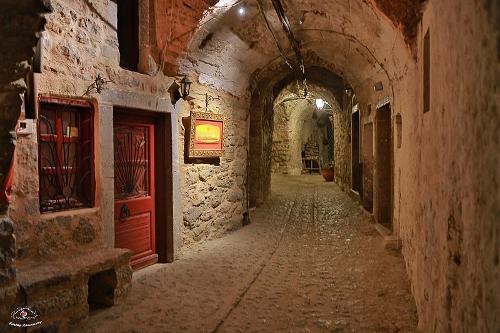 Mesta ChiosPhoto: KONSTANTINOS ZANNARAS CC4.0 International no changes made
Mesta ChiosPhoto: KONSTANTINOS ZANNARAS CC4.0 International no changes made
Other mastic villages include Lithi, Vessa, Elata, Olympí, Armolia, Kalamóti, Patrika, Flatsia, Nenita, Vouno, Kini, Pagida, Kattaraktis, Exo Didima, Mesa Didima, Tholo Potami, Kalimassia, Mermygki, Neochóri, Thymianá and Ágios Geórgios Sykousis. Many mastic villages are walled, have towers at the corners of the village and a complicated street plan to protect themselves from pirates' attacks in earlier centuries. Moreover, they cannot be seen from the sea.
Kampochora, in the central part of Chios, south of Chios town. Kambos, with its many beautiful villages, is the most fertile area of Chios and famous for its many citrus groves.
Voriochora, in the north of the island, has high mountains with magnificent views and beautiful nature, but also the traditional mountain villages are worth visiting.
Chios city (usually called 'Chora' by the locals) is a surprisingly modern city. It is dominated by the walls of the Kastro. This Genoese castle encloses an old quarter with narrow streets, tall stone houses with wrought-iron balconies and shuttered windows. Fountains bear Koranic inscriptions alluding to their Turkish origins.
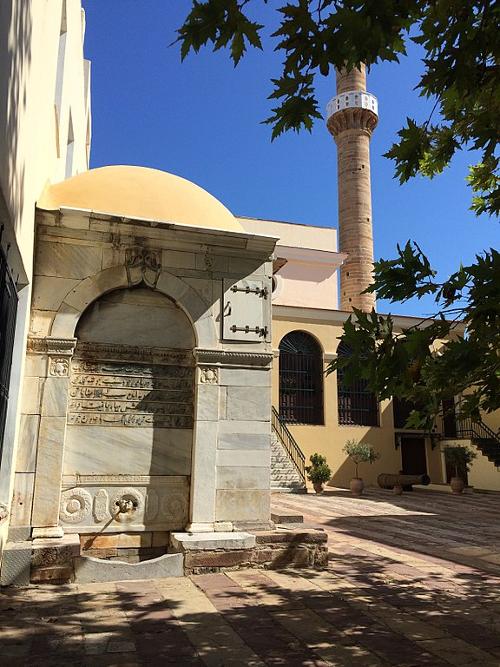 Byzantine museum in ChiosPhoto: Balkanique CC 4.0 International no changes made
Byzantine museum in ChiosPhoto: Balkanique CC 4.0 International no changes made
The Byzantine Museum is housed in a former mosque, with the only intact minaret in the Aegean Islands. The museum contains a collection of Hellenistic sculptures, Roman finds and a collection of Turkish, Jewish and Armenian tombstones that hint at the island's multi-ethnic past.
Following the destruction by the Turks in 1822 and the earthquake in 1881, there are not many historical remains in Chios town. What has been preserved is the Kastro, the old town centre with a Byzantine fortified complex from the Middle Ages with a former mosque, old Turkish baths, an Ottoman cemetery and the impressive gate, the Porta Maggiora. Of course, Chios city also has a maritime museum, given the glorious seafaring history of the island.
Pyrgi, the biggest mastic village of Chios, is known for its decorative geometrical, floral and animal motifs on houses and other buildings, including the Theotokis church. The so-called 'xistá', some of which date back to the Middle Ages, are applied by a special scratching technique.
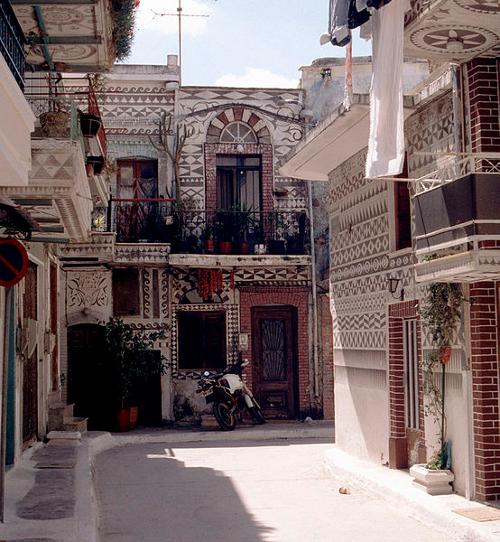 Chios houses in Pyrgi with 'xistá' motivesPhoto: Mätes II CC 3.0 Unported no changes made
Chios houses in Pyrgi with 'xistá' motivesPhoto: Mätes II CC 3.0 Unported no changes made
Nea Moni, the 'New Monastery' is a misnomer. This imposing religious institution was built in the 11th century by the Byzantine Emperor Constanine IX Monomachos. Nea Moni is probably the most beautiful religious building in the Aegean Islands, with beautiful mosaics that date back to the Golden Age of Byzantine religious art. The monastery is located 15 km from Chios Town.
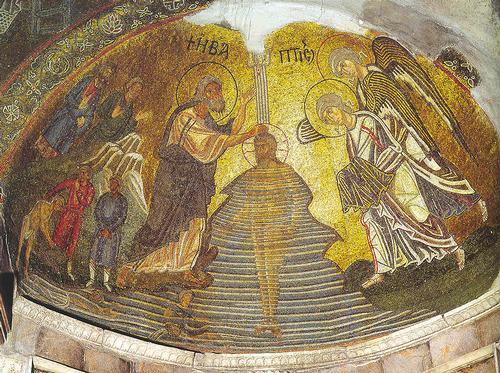 Chios magnificent mosaics in Nea MoniPhoto: Public domain
Chios magnificent mosaics in Nea MoniPhoto: Public domain
Anavatos is a ghostly but picturesque hilltop village that has been deserted since 1822, when its 400 inhabitants threw themselves off the 300-metre cliff to avoid falling into the hands of the Turks. Elsewhere in Greece, this uprising eventually led to independence, but in Chios it was violently suppressed, resulting in the massacre of 30,000 islanders.
The most famous beaches of Chios are Agia Iríni, Karfás, Mávria Vólia with its pitch-black volcanic pebbles, Emborios, Nagós and Sidiroúnda.
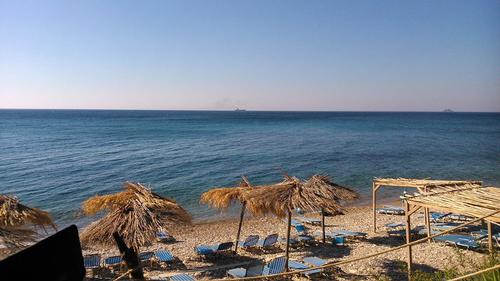 Chios beachPhoto: Public domain
Chios beachPhoto: Public domain
Sources
Wikipedia
CIA - World Factbook
BBC - Country Profiles
Last updated December 2025Copyright: Team The World of Info